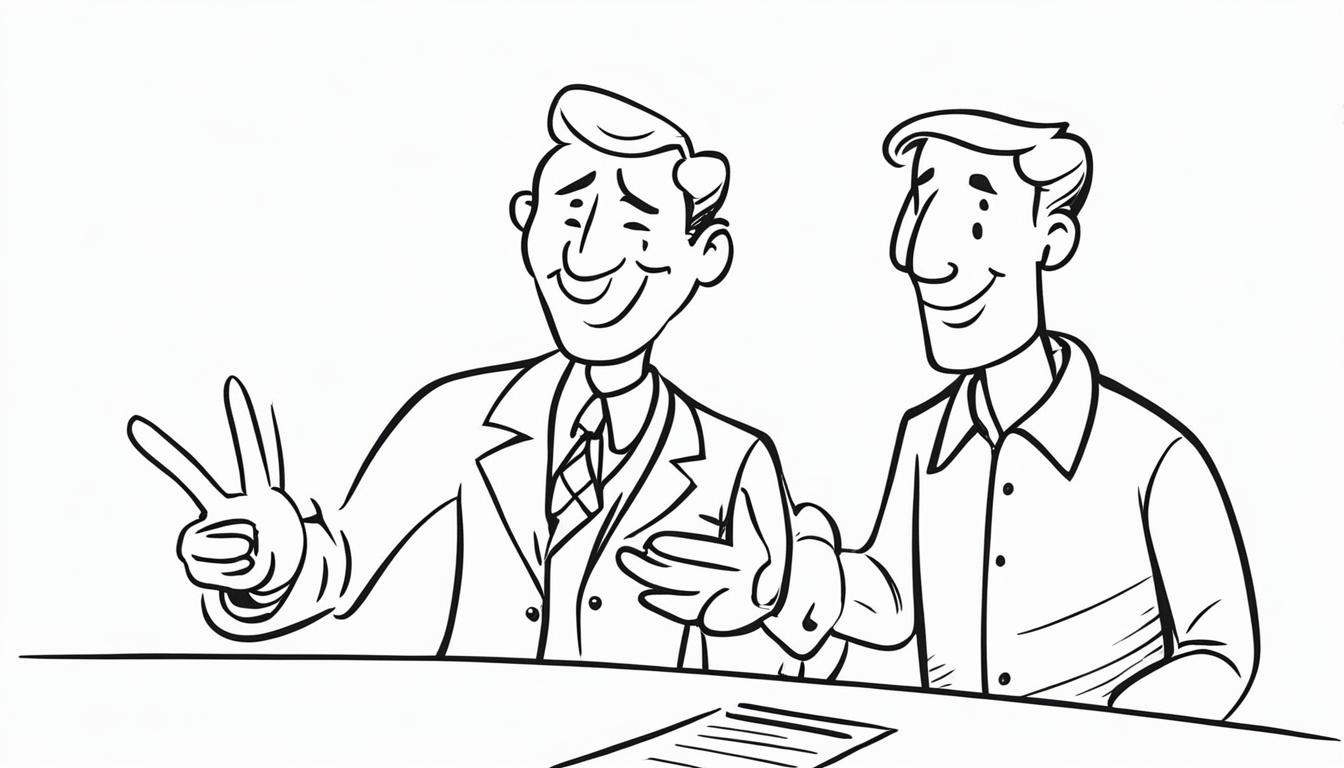When it comes to declining a business offer, etiquette and tact are of the utmost importance. A dismissive or rude response can tarnish relationships and leave a negative impression. That’s why it’s crucial to have alternative phrases that convey your lack of interest while remaining polite and respectful.
Exploring polite ways to say “not interested” can help you navigate business propositions with grace and poise. By choosing your words carefully, you can maintain professionalism while declining offers that may not align with your objectives or priorities.
In this article, we will delve into various alternative expressions to “not interested.” These phrases will allow you to politely decline business offers, turn down job opportunities, and express your disinterest with grace. The power of effective communication lies in conveying your message while ensuring the other party feels valued and respected.
Other Ways to Express Lack of Interest
The phrase “not interested” can sometimes come across as dismissive or impolite. If you want to decline an offer or express disinterest in a more tactful and respectful manner, there are alternative expressions you can use. These phrases convey your lack of interest while still maintaining a polite and considerate tone.
1. “I don’t think this is the right fit for me.”
When you feel that the offer or opportunity is not aligned with your needs, interests, or goals, you can express your lack of interest by stating that it is not the right fit for you. This phrase acknowledges that the proposal or suggestion does not match your requirements or preferences.
2. “I have decided to explore other options.”
If you have already made a decision to explore different opportunities or options, you can politely express your disinterest by mentioning that you have chosen to pursue alternative paths. This phrase indicates that you are actively considering other possibilities and focusing your attention elsewhere.
3. “I’m honored, but I’m not interested in this.”
When you want to convey appreciation for the offer while declining it, you can use this phrase. It expresses gratitude for the consideration while politely stating that you are not interested in the particular opportunity being presented.
4. “I’m afraid this does not appeal to me.”
If the offer or proposal does not capture your interest or resonate with you, you can use this phrase to politely express your lack of enthusiasm. It conveys that the opportunity does not align with your personal preferences or needs, without being dismissive or rude.
Using these phrases allows you to decline or express disinterest in a respectful and considerate manner. Remember, it’s important to choose your words thoughtfully to maintain positive and professional relationships while communicating your lack of interest.
Polite Refusal in a Business Proposal
When presented with a business proposal that doesn’t align with my vision and goals, expressing my polite refusal becomes an art of grace and tact. It is essential to respond with respect and appreciation while clearly conveying my position. One phrase that has proven effective in such situations is, “I don’t think this is the right fit for me.” This simple yet powerful sentence allows me to acknowledge the proposal’s value while delicately expressing that it does not align with my vision for my company.
By using this phrase, I am able to convey my gratitude for the opportunity while confidently declining the offer. It shows that I have carefully considered the proposal and have concluded that it does not align with my business objectives or strategic direction. This response allows me to maintain a positive relationship with the individual or organization presenting the proposal, ensuring future collaboration and potential opportunities.
When implementing this phrase in an email response, I approach it with sincerity and an empathetic tone. I take the time to express my gratitude for their interest in working with me and acknowledge the effort they put into crafting the proposal. By emphasizing that it is not a personal rejection but rather a strategic decision, my polite refusal conveys professionalism and respect.
“I don’t think this is the right fit for me.”
This phrase serves as a gentle but assertive way to decline a business proposal without coming across as dismissive or rude. It conveys that I have thoroughly evaluated the opportunity and have made a well-informed decision that does not align with my business objectives. It allows me to gracefully decline while maintaining the professional relationship and leaving the door open for future collaboration.
| Polite Refusal | Notes |
|---|---|
| I don’t think this is the right fit for me. | Expresses gratitude, acknowledges value, and politely declines. |
| This proposal doesn’t align with my current business goals. | Highlights strategic misalignment while maintaining professionalism. |
| I appreciate your offer, but I’m unable to move forward at this time. | Expresses gratitude and respectfully declines the offer. |
By utilizing this phrase, I am able to navigate the delicate process of declining a business proposal with poise and professionalism. It allows me to communicate my position effectively while preserving the potential for future collaboration. Polite refusal in a business proposal is an art that, when mastered, fosters respect and maintains positive relationships in the business world.
Declining Job Offers Politely
When I receive a job offer that I’m not interested in, I believe it’s crucial to decline it in a polite and respectful manner. Instead of simply saying “no,” I have found that using the phrase, “I have decided to explore other options,” effectively communicates my appreciation for the offer while expressing my decision to pursue different opportunities.
By using this alternative phrase in my email response, I aim to maintain a positive relationship with the employer while politely declining their offer. It conveys my gratitude for the consideration and indicates that I have carefully evaluated my options without dismissing their offer outright.
I believe that declining job offers politely is essential for professional interactions. It shows respect for the time and effort invested by the employer in the selection process. By delivering the message with kindness and gratitude, I uphold my reputation as a professional who values relationships and maintains a positive demeanor even in challenging situations.
“I have decided to explore other options.”
Using this approach, I can respectfully decline the job offer while leaving the door open for future opportunities. It’s important to remember that the person offering the job may have other positions available or may consider me for future roles, so maintaining a positive rapport is crucial.
Declining job offers politely is an essential skill in the professional world. It demonstrates professionalism, consideration, and gratitude, which can leave a lasting impression on employers. By using alternative phrases and maintaining a positive tone, I uphold my personal values while navigating the delicate task of declining a job offer with grace and respect.
The Art of Saying “No” Politely
Politely declining an offer or request can be a delicate task, requiring finesse and tact. It is important to convey your lack of interest or inability to accept while maintaining respect and consideration for the other person. Mastering the art of saying “no” politely allows you to navigate these situations with grace.
“I’m sorry, but it does not work for me.”
“I’m going to have to turn down your offer.”
These expressions are examples of polite ways to decline without causing offense or hurt feelings. By using phrases like these, you can communicate your position firmly yet respectfully.
“I’m sorry, but it does not work for me.”
“I’m going to have to turn down your offer.”
By using polite language, you not only avoid causing unnecessary conflict or discomfort but also demonstrate your professionalism and consideration for others’ feelings. It’s important to remember that saying “no” politely is not about avoiding the truth or making excuses, but rather about communicating your boundaries and preferences in a respectful manner.
Is It Rude to Say “Not Interested”?
Saying “not interested” is not inherently rude. In fact, it can be an effective way to communicate your lack of interest in something someone is selling or offering. However, it’s important to use polite and respectful language when expressing your disinterest.
Instead of a blunt “not interested,” consider incorporating phrases that soften the impact of your refusal. For example, you can say “sorry, but I’m uninterested,” or “I’m afraid there’s no part of me that cares about this.” These expressions convey your lack of interest without being harsh or dismissive.
Remember, politeness is key when declining an offer or proposal. By using polite language, you can maintain positive relationships and avoid unnecessary conflict or discomfort.
Proper Etiquette for Declining Business Offers
When it comes to declining business offers, proper etiquette is essential. It not only reflects your professionalism but also helps maintain positive relationships. To navigate this delicate situation with grace, follow these guidelines:
Expressing Gratitude
Start by thanking the person for their time, effort, and consideration. Acknowledge the value they have placed on your involvement, expressing genuine appreciation for the opportunity presented.
Delivering the News
Be direct and concise when delivering the decline. Promptly inform the person of your decision without beating around the bush. Avoid unnecessary delays, as doing so may prolong uncertainty and inconvenience.
Providing Reasons
While it’s not always necessary to provide detailed explanations, offering some reasons for your decline can help the other party understand your perspective. Choose your words carefully to ensure they align with your intentions.
“I have carefully considered your offer and regretfully have to decline due to my current workload commitments.”
Keeping it Brief
Keep your response concise, focusing on the key points. Avoid lengthy explanations that may dilute your message or lead to misunderstandings. Being clear and concise demonstrates respect for the time and attention of the individual making the offer.
Maintaining Professionalism
Throughout your communication, maintain a polite and professional tone. Even though you may be declining the offer, it’s crucial to uphold a respectful demeanor. Choose your words and tone to demonstrate your integrity and professionalism.
Setting Boundaries
If necessary, indicate your preferred method of communication moving forward. Politely ask to be removed from mailing lists or specify any boundaries you would like to establish. This helps maintain clarity and allows both parties to move on.
In summary, proper etiquette for declining business offers involves expressing gratitude, delivering the news directly, providing reasons when appropriate, keeping the response brief, maintaining professionalism, and setting boundaries if necessary. By following these guidelines, you can gracefully decline offers while preserving positive connections.
The Power of Goal Setting
Goals are the guiding force that propels us forward in our educational and language learning journeys. They provide us with a sense of direction and purpose, igniting a fire within us to achieve our aspirations. As Hattie’s research has revealed, goal setting is one of the most impactful tools for improving student success, making it a powerful instructional intervention.
When teachers implement goal setting strategies, they empower students to take ownership of their learning and cultivate a growth mindset. By setting clear and achievable goals, students are motivated to strive for excellence and stay focused on their language learning endeavors.
“The power of goal setting lies in its ability to unlock our hidden potential and push us beyond our perceived limitations.”
Having well-defined goals creates a roadmap that paves the way for success. Each milestone reached becomes a stepping stone towards greater accomplishments. When students see their progress, they gain confidence and develop a sense of self-efficacy, fueling their motivation to continue their language learning journey.
Moreover, goals serve as a constant reminder of the purpose behind their efforts. They act as a compass, guiding students through challenges and setbacks, keeping them focused even in the face of adversity. With goals in sight, students are more likely to persevere and overcome obstacles on their path to proficiency.
Goal setting also cultivates important skills such as time management, organization, and self-reflection. By setting deadlines for specific milestones, students learn to prioritize tasks and manage their time effectively. Additionally, as they assess their progress and adjust their goals accordingly, they develop valuable self-reflective skills that promote continuous growth and improvement.
Embracing the power of goal setting empowers both teachers and students to embark on a journey of growth and achievement. By harnessing the energy and focus that goals provide, students can surpass their own expectations and unlock their full potential. As educators, our role is not only to impart knowledge but also to inspire and nurture the goal-oriented mindset that leads to lifelong success.
Remember, “It’s not the goal itself, but the journey towards it that transforms us.” – Unknown
Visualizing Goals as Doors
When it comes to envisioning our goals, we often resort to familiar symbols like archery targets or soccer nets. However, there is a more profound and illuminating metaphor that we can embrace—goals as doors. Just imagine, when we set a goal, it’s like encountering a closed door, waiting for us to unlock its possibilities.
Stepping closer to that door, we may not fully comprehend the wonders that lie beyond. But just as we turn the key and push it open, we embark on a journey of exploration and growth.
These doors symbolize the transformative power of our goals. They are not stationary targets, but rather dynamic passages leading to new horizons. Each step we take towards our goals opens up a world of opportunities and choices, expanding our perspectives and pushing us to reach our full potential.
Goals are not simply destinations, but gateways to self-discovery.
Visualizing goals as doors helps us embrace the uncertainty and joy of the journey. Just as we embark on an adventure by stepping through a door, we enter into a realm of learning, self-improvement, and personal fulfillment.
The image below serves as a visual representation of this metaphor.
Understanding the Origin of Goals
Our journey as educators is shaped by the experiences we encounter and the mentors who inspire us. Our own attitudes and ideas about goals are often influenced by these influential factors. Reflecting on the origin of our teaching goals is vital to ensure that we provide the best education for our students.
By examining the genesis of our goals, we can question their validity and effectiveness. Were they molded by the methods of our favorite teachers or the shortcomings of our least favored ones? It is through this introspection that we can avoid the mistakes of the past and set more meaningful and impactful goals for the students under our guidance.
Just as every flower blooms from a seed rooted in the soil, our goals sprout from the rich tapestry of our experiences and aspirations. Unearthing the origin of our goals allows us to harness the transformative power of education and provide our students with an educational journey that is both enriching and enlightening.
Let us embark on this voyage of self-discovery, guided by the ripples of past inspirations and the promise of a future filled with unlimited possibilities.
Setting High Goals for Students
As an educator, I believe in the power of setting high goals for my students. By challenging them to aim for greatness, I can inspire them to reach their full potential and go beyond what they thought was possible. Students often underestimate their abilities or limit themselves based on false assumptions. It’s my job to break down those barriers and show them that they can achieve more than they ever imagined.
When I set high goals for my students, I open doors to new possibilities. I encourage them to dream big and think outside the box. Whether it’s mastering a difficult concept, improving their language skills, or taking on leadership roles, I want my students to know that they are capable of greatness.
Language proficiency, for example, is an area where setting high goals can have a significant impact. By aiming for fluency in multiple languages, students can open doors to a wide range of job opportunities and experiences. It’s not just about language skills; it’s about expanding their horizons and embracing the diversity of the world.
Setting high goals for students is like giving them wings to fly. It empowers them to soar above their limitations and discover their true potential.
I believe that high goals also foster a growth mindset in students. When they see the progress they can make by pushing themselves beyond their comfort zones, they develop a sense of confidence and resilience that will serve them well throughout their lives. High goals teach them the value of hard work, perseverance, and the joy of achieving something they once thought was impossible.
To illustrate the impact of setting high goals, let’s take a look at the following table:
| Low Goals | High Goals |
|---|---|
| Students aim for average grades. | Students strive for excellence and aim for top grades. |
| Students stick to their comfort zones. | Students embrace challenges and explore new territories. |
| Students settle for mediocrity. | Students unleash their full potential and achieve greatness. |
As you can see, setting high goals transforms students’ mindset and outcomes. Instead of settling for mediocrity, they become hungry for success and eager to surpass their own expectations.
Creating a Supportive Environment
Setting high goals for students is not just about challenging them; it’s also about providing the necessary support to help them succeed. As an educator, it’s my responsibility to create a supportive and nurturing environment where students feel safe to take risks and learn from their mistakes.
I encourage open communication and collaboration, fostering a sense of community among my students. By creating a classroom culture that celebrates growth and resilience, I empower my students to embrace challenges and persevere in the face of difficulties.
Ultimately, setting high goals for students is a transformative experience. It’s not just about academic achievement; it’s about preparing them for life beyond the classroom. By setting high goals, I empower my students to become the best versions of themselves, ready to tackle any challenge that comes their way.
Expecting Goals to Evolve and Change
Goals are the guiding stars that light our way, illuminating our aspirations and awakening our potential. They are the seeds we plant in fertile soil, nurturing them with dedication and perseverance. But just like the seasons change and flowers bloom, goals too are meant to evolve and change.
As we embark on the journey of self-discovery and gain wisdom through experience, our understanding of ourselves deepens. The goals we set at the beginning of our quest may transform as we uncover hidden passions, ignite new interests, and uncover untapped potentials. It is a testament to our growth, our capacity to adapt and embrace the winds of change that sweep through our lives.
Teachers hold the key to unlocking the transformative power within their students. They are the gentle guides who walk alongside us, nurturing our dreams and helping us steer towards our true purpose. With their wisdom and guidance, teachers encourage us to explore the depths of our aspirations, to question our desires, and to refine our goals. Their support helps us align our dreams with our individuality, ensuring that our goals are not mere imitations of others but authentic reflections of our innermost selves.
So, let us embrace the dance of evolution, knowing that as our goals evolve and change, we are growing into the best versions of ourselves. Let us hold our aspirations with open hands, ready to catch the winds of change that will carry us to new horizons. For it is in the ever-changing nature of our goals that we find the true essence of learning and the limitless possibilities that await.
Source Links
- https://www.flowrite.com/blog/how-to-politely-decline-a-business-offer
- https://wordselector.com/polite-ways-to-say-not-interested-in-business/
- https://www.pearson.com/languages/community/blogs/2023/04/5-ways-to-politely-say-no-in-business-english.html












